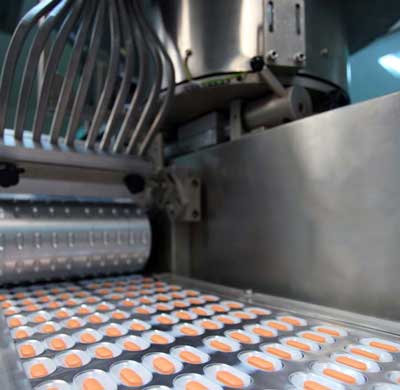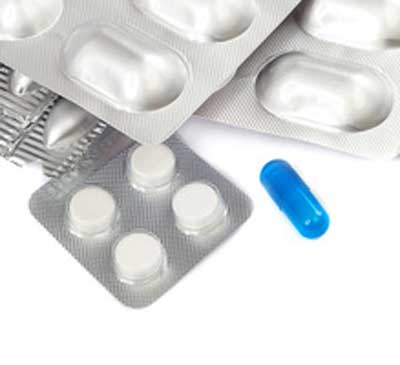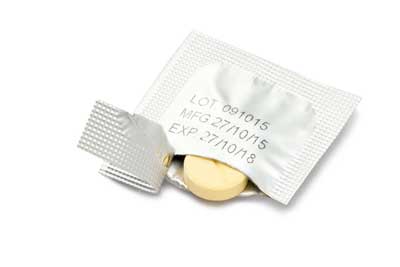

About the Author:
CEO at AlFiPa, responsible for operations as well as purchasing and sales. He is the primary contact for orders and deliveries within the company.
High-quality medicines need packaging in which they are safely protected from environmental influences, oxygen and moisture. It is only in this way that the ingredients retain their effects which they are to develop when ingested.
Blister packs are often used for medicines in the pharmaceutical industry. These consist of the so-called push-through Blister (or shorter “Blister”), a moulded plastic with cavities for the individual tablets, and a push-through closure made of aluminium foil, which is called blister film or lid film. As a result, capsules and tablets are hygienically clean and protected.
Blister packs: a convenient and practical way to protect medicines.
Blister packs are easy to handle, compact and easy to carry. In them, thanks to the aluminium foil, each product is individually packaged and protected against all influences until it is consumed.
The products are constantly being further developed in order to meet all requirements with regard to reliability, hygiene and quality in the future. For the production of the coated or printed blister films, apply the same medical-hygienic standards that are customary in the pharmaceutical industry in the production of tablets and co-products.
Heat sealing lacquer for sealing the blister with the blister film

Pills are blister-packed mechanically
The plastic push-through blister has to be airtight sealed with the cover film made of aluminium to ensure effective protection of the tablets. For this purpose, a suitable sealing agent, usually a heat seal lacquer, is applied to the aluminium foil.
After the tablets are placed in the individual wells of the blister mold, the aluminium foil is applied. By the right combination of time, pressure and heat, the heat seal lacquer on the aluminium foil combines with the plastic material of the blister. Both are perfectly sealed to protect the tablets from environmental influences.
On the other hand, a primer is frequently painted on the finished blister package, often also a manufacturer’s logo or other markings, so that consumers can safely identify the drug.
Blister cover foil made of aluminium
Both soft and hard aluminium foils are used for the cover foils of the push-through packaging.
Traditionally, a hard aluminium foil is used. This has only a small stretching force. This has the advantage that you can break relatively quickly and release the drug with a relatively low force.
If, on the other hand, a soft aluminium foil is used, more force must be applied to reach the drug because the film has a higher stretching force. Thus, a blister packaging with a cover foil made of soft aluminum is considered to be more child-resistant.
Blister foil made of soft aluminium is more secure for children.
This effect can be further intensified by using a laminate of aluminium with paper and / or PET.
Cover material made of hard aluminium

Push-through blister with Aluminum foil
In the European pharmaceutical industry is used a blister film made of hard aluminium foil with a thickness of about 25 micrometers (μ). If the drug is to be taken, it can simply be pushed through the hard aluminium. The hardness of the film facilitates the so-called push-through opening.
Normally only the outer side of the aluminium foil, which is directly visible to the customer, is provided with printing. But also, the inside sealed with the heat seal lacquer could be printed.
In this inner side, it is obligatory to have a double coating with a heat seal primer and the heat seal lacquer applied thereon. The primer ensures that the heat seal lacquer adheres securely to the aluminium foil and is matched to the aluminium foil.
The primer can also be dyed. The reasons for this are mainly for marketing, and not to protect, even better, the drugs. The primer coat is followed by the heat seal lacquer. If the primer is dyed, the heat sealant protects the medicament against the color pigments in the primer – the colour pigments are enclosed between the aluminium foil and the heat sealant lacquer.
The colour pigments, the primer and the heat seal lacquer have to be well matched.
Cover material made of soft aluminium
Of the packed medicament in form of capsules or tablets should be particularly safe from unauthorized opening by children’s hands, it is a good idea to close the blister packs with soft aluminium foil.
The same applies to soft aluminium foil as with hard aluminium foil. However, the thickness and flexibility of the aluminium foil makes it difficult for children to push the tablets through the soft aluminium foil. The aluminium foil is extra perforated at the sealing seams so that it can’t be completely removed from the blister film.
This specific thickness is used in the European pharmaceutical industry to efficiently and safely dispense medications by pressing them out of the packaging.
Blister film made of a composite of aluminium with paper / PET

Another possibility to pack tablets and capsules
In the pharmaceutical industry, composite films of aluminium and paper and / or PET are used as cover films. A paper with a weight of 40-50 g / m² is laminated with aluminium foil. Cover foils with aluminium and paper can be printed directly on the outward-facing surface of the paper.
USA: Child safety through peel-off-push-through
While in Europe the combination of aluminium with paper is used as child protection for the blister packs, the aluminium is used in the USA like a peel-off foil, which is to be pulled down in one piece from the blister pack.
This is referred to as peel-off-push-through packaging. First, the paper or composite of PET and paper must be peeled off before the actual product can be pressed out of the package.
For the paper or paper / PET to be peeled off as a whole, the aluminium foil used must be thicker. Therefore, in the pharmaceutical industry in the USA, a thicker aluminium foil is generally used for this composite film than in Europe.
Trends in pharma-industry: More demand, more competition…
The market for pharmaceutical products is growing all over the world: more and more people, especially in the emerging markets, are able to afford drugs and thus contribute to the growth of the industry. As a result, the demand for aluminium foil for the drug blister packaging is steadily increasing.
The customers become more heterogeneous, so the products and their packaging become more and more complex – even in their handling. Thanks to the increased use of generics, however, cost pressure and competition have become much tougher.
Medications are getting more affordable for more and more people, with impact on the packaging.
These trends ensure that companies are looking for technical solutions that are effective and efficient, while at the same time guaranteeing the high standards placed on the manufacture and packaging of medicinal products.
Blister packaging is characterized by a simple handling simultaneously with a complete protection of the manufactured drugs. By continually developing and using new materials such as new heat seal lacquers, innovative printing processes or composite foils made from aluminium with paper, PET and other plastics, new developments are also emerging in the field of blister packaging.
Learn more about our films for blister packaging – contact us!
